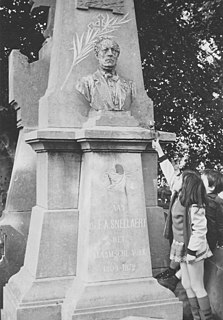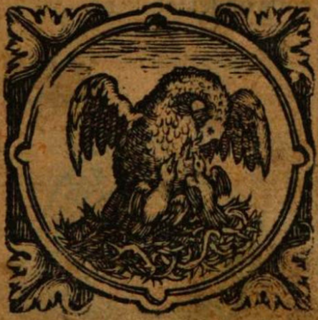Related Research Articles

Jan Frans Willems was a Flemish writer and father of the Flemish movement.

Lambertus Jacobus Johannes "Bertus" Aafjes was a Dutch poet whose work is marked by his devout Catholicism.

Jean-Baptist David was a canon and professor of Dutch and history at the Katholieke Universiteit Leuven.
François-Louis Ganshof was a Belgian medievalist. After studies at the Athénée Royal, he came to the University of Ghent, where he came under the influence of Henri Pirenne. After studies with Ferdinand Lot, he practiced law for a period, before returning to the University of Ghent. Here he succeeded Pirenne in 1930 as professor of medieval history, after Pirenne left the university as a result of the enforcement of Dutch as language of instruction. He remained there until his retirement in 1961.
Lucas de Heere was a Flemish painter, poet and writer. His costume books and portraits are a valuable resource in depicting 16th-century clothing.

Ferdinand Augustijn Snellaert was a Flemish writer.

Cornelis de Bie was a Flemish rederijker, poet, jurist and minor politician from Lier. He is the author of about 64 works, mostly comedies. He is known internationally today for his biographical sketches of Flemish and Dutch painters in his Het Gulden Cabinet der Edel Vry Schilderconst, first printed in 1662.

Adelbert Van de Walle (1922–2006) was a Flemish-Belgian architect, art historian and professor in the History of Art and Archaeology at the University of Ghent (UGent).
Henry Jaye was an English Catholic exile in the Southern Netherlands. He became printer to the city of Mechelen.
Rutger Velpius was a 16th- and 17th-century printer and bookseller. He was the first printer in the city of Mons, and later became printer to the court in Brussels. His career coincided closely with the first decades of the Dutch Revolt
Cornelius Columbanus Vrancx (c.1530–1615) was the 60th abbot of St Peter's Abbey in Ghent.

Margaretha van Bancken was a Dutch publisher from Haarlem.

Guiliam or Willem Lesteens (1590–1661), Latinized Gulielmus Lesteenius, was a printer and publisher in the city of Antwerp, in the Spanish Netherlands.
Gerard Isaäc Lieftinck, known in print as G.I. Lieftinck, was a Dutch academic specialising in medieval European manuscripts.
Johan Decavele is a Belgian historian and archivist who has published widely on the history of Ghent and on the history of the Reformation. He was a contributor to the Oxford Encyclopedia of the Reformation and to Oxford Art Online.
Events in the year 1858 in Belgium.

Ferdinand van der Haeghen or Vanderhaeghen (1830–1913) was a Belgian librarian and bibliophile.

Constant-Philippe Serrure (1805–1872) was a prolific Belgian historian and collector who taught at Ghent University. He was a founding member and active contributor of the Maetschappy der Vlaemsche Bibliophilen, which published editions of medieval Flemish texts.
Herman Herbers was a Dutch pastor and theologian.
The song Egidius waer bestu bleven is an early rondo in Middle Dutch.
References
- 1 2 3 Roland Willemyns. "Maetschappy der Vlaemsche Bibliophilen". NEVB Online. ADVN - archief voor nationale bewegingen.
- 1 2 Statutes of the society, On Google Books